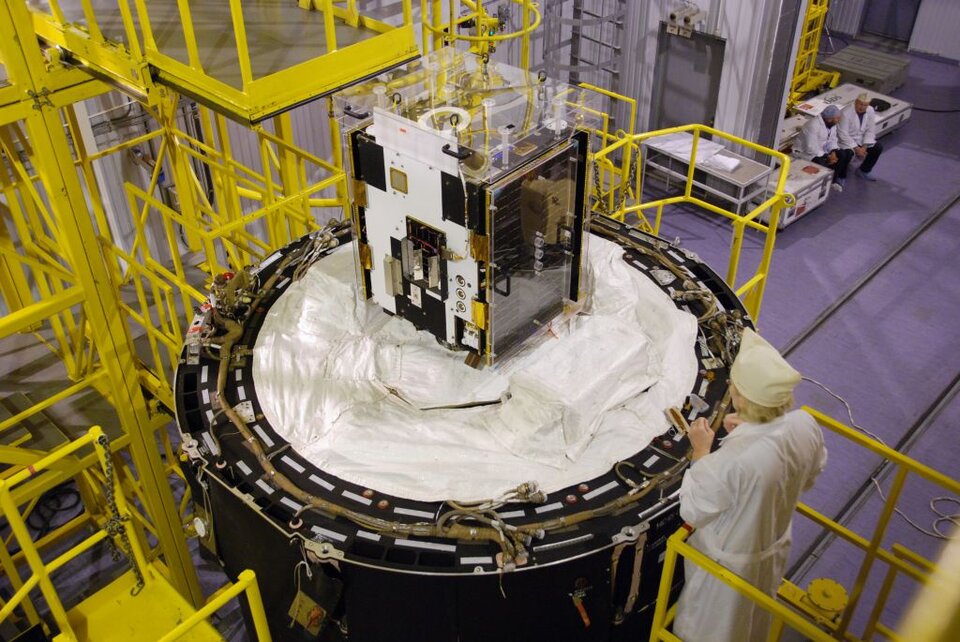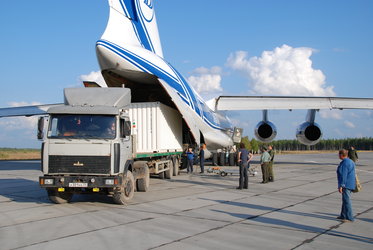Proba-2 mounted on its Rockot launcher
Proba-2 has come one small but significant step nearer to launch: the cube-shaped satellite, among the smallest ever flown by ESA, has been attached to the upper stage of the Rockot launcher set to deliver it into orbit.
The procedure took place on Saturday 17 October, in the MIK integration facility of the Plesetsk Cosmodrome in northern Russia, where ESA’s Proba-2 technology demonstrator and the Soil Moisture and Ocean Salinity (SMOS) Earth Explorer satellite are scheduled to share a flight into space on 2 November.
The previous day saw the miniature satellite, which has a volume of less than one cubic metre, leave the ground for the last time as it was attached to a customised launch adapter.
On Saturday the combination of satellite and adapter was moved via a special dolly from the satellite integration cleanroom to the space-head assembly area, where the fully-fuelled Breeze-KM upper stage of the three-stage Rockot launcher was waiting.
Most of the non-critical protective covers were removed from the satellite then the dolly was moved adjacent to the Breeze. Before proceeding any further a formal declaration of Proba-2’s readiness for mating with the launcher was recorded by the small team from Verhaert Design & Development in Belgium who have been preparing and testing the satellite in Plesetsk since 3 September.
The Verhaert team then watched closely as the launcher engineers took over care of their ‘baby’, lifting Proba-2 on top of the Breeze and fixing it into its launch position before making electrical connections. Next a customised protective cover was added. With Proba-2 in place, half the Rockot’s payload is aboard. SMOS will now be attached to its own launch adapter and placed above Proba-2, in preparation for flight in November.
In-orbit technology testing supporting European competitiveness

Proba-2 is second in ESA's Project for OnBoard Autonomy series, building on nearly eight years of operational experience gained with Proba-1. Proba-2 incorporates a total of 17 new technological developments and four scientific experiments, focused on solar and space weather observations.
The Proba series is part of ESA's GSTP In-orbit Technology Demonstration Programme: missions dedicated to the demonstration of innovative technologies. In orbit demonstration is the final step on the technology development ladder, proving new hardware has the 'right stuff' for ongoing use.
Such missions provide small and medium sized companies with rich operational experience essential for European industry to remain innovative and competitive.
As part of ESA's strategy to reduce mission costs the satellite will piggyback its way to orbit aboard the same Rockot launcher carrying ESA's full-sized Soil Moisture and Ocean Salinity (SMOS) Earth Explorer satellite.
More
Frederic Teston
Head of the Systems and Engineering Support Division
Frederic.Teston @ esa.int












